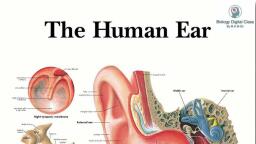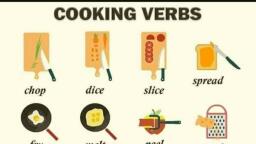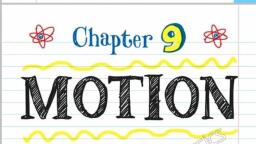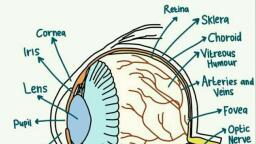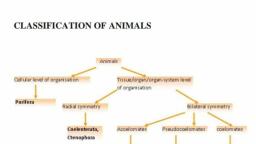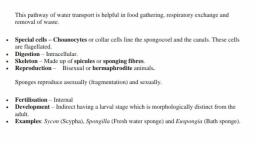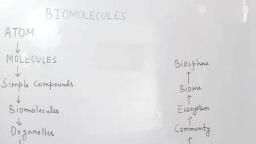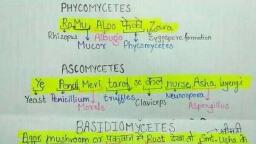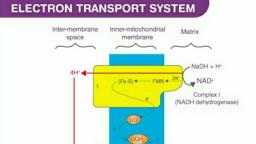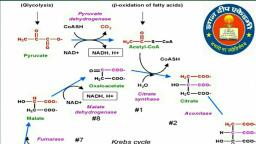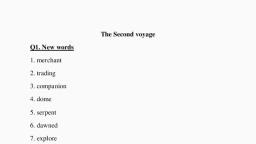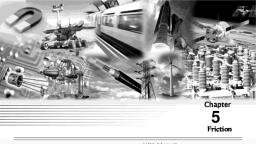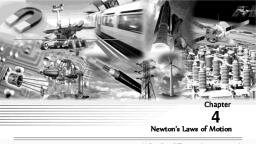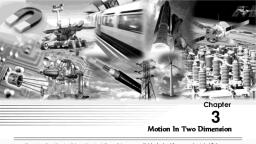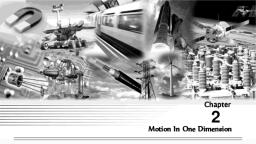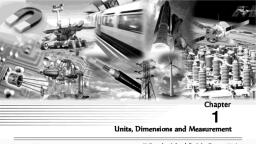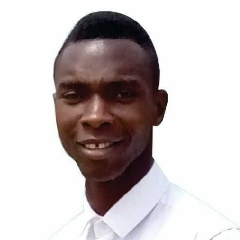Question 1 :
Which one of the following represents the correct dimensions of the gravitational constant?
Question 3 :
{tex} \left[ \mathrm { MLT } ^ { - 1 } \right] + \left[ \mathrm { MLT } ^ { - 1 } \right] = \ldots \ldots \ldots \ldots {/tex}
Question 4 :
The pitch of the screw gauge is {tex} 0.5 \mathrm { mm } {/tex}. Its circular scale contains {tex}50{/tex} divisions. The least count of the screw gauge is
Question 6 :
What is the correct number of significant figures in {tex} 0.0003026 ? {/tex}
Question 7 :
Which of the following quantities has not been expressed in proper unit?
Question 9 :
Two quantities {tex} A {/tex} and {tex} B {/tex} have different dimensions which mathematical operation given below is physically meaningful?
Question 10 :
An object is moving through the liquid. The viscous damping force acting on it is proportional to the velocity. Then dimensions of constant of proportionality are
Question 11 :
Let {tex} Q {/tex} denote the charge on the plate of a capacitor of capacitance {tex} C . {/tex} The dimensional formula for {tex} \frac { Q ^ { 2 } } { C } {/tex} is
Question 12 :
The division of energy by time is {tex} \mathrm { X } . {/tex} The dimensional formula of {tex} \mathrm { X } {/tex} is same as that of
Question 13 :
Turpentine oil is flowing through a capillary tube of length {tex} \ell {/tex} and radius r. The pressure difference the two ends of the tube is p. The viscosity of oil is given by : {tex} \eta {/tex} = {tex} \frac {p({r}^2 -{X}^2)}{4v \ell}{/tex} . Here v is velocity of oil at a distance x from the axis of the tube. From this relation, the dimensional formula of {tex} \eta {/tex} is
Question 14 :
Distance travelled by a particle at any instant {tex}\mathrm{^{ \prime } t ^ { \prime } }{/tex} can be represented as {tex}\mathrm{ S = A ( t + B ) + C t ^ { 2 } .} {/tex} The dimensions of {tex} \mathrm B {/tex} are
Question 15 :
A thin copper wire of length {tex} l {/tex} metre increases in length by {tex} 2 \% {/tex} when heated through {tex} 10 ^ { \circ } \mathrm { C } {/tex}. What is the percentage increase in area when a square copper sheet of length {tex} l {/tex} metre is heated through {tex} 10 ^ { \circ } \mathrm { C } ? {/tex}
Question 16 :
Dimensions of 'resistance' are same as (where {tex}\mathrm h{/tex} is Planck's constant and e is charge)
Question 17 :
The quantity having the same units in all systems of units is
Question 18 :
If {tex}\mathrm L = 2.331 \mathrm { cm } ,\mathrm B = 2.1 \mathrm { cm } , {/tex} then {tex} \mathrm { L } + \mathrm { B } = {/tex}
Question 21 :
The heat generated in a circuit is given by {tex} Q = I ^ { 2 } {/tex} Rt, where I is current, {tex} R {/tex} is resistance and {tex} t {/tex} is time. If the percentage errors in measuring {tex} I {/tex}, {tex} R {/tex} and {tex} t {/tex} are {tex} 2 \% , 1 \% {/tex} and {tex} 1 \% {/tex} respectively, then the maximum error in measuring heat will be
Question 22 :
{tex} \mathrm { A } , \mathrm { B } , \mathrm { C } {/tex} and {tex} \mathrm { D } {/tex} are four different physical quantities having different dimensions. None of them is dimensionless. But we know that the equation {tex} \mathrm { AD } = \mathrm { C } \ln ( \mathrm { BD } ) {/tex} holds true. Then which of the combination is not a meaning ful quantity?
Question 23 :
The ratio of the dimensions of Planck's constant and that of the moment of inertia is the dimensions of
Question 24 :
<b>{tex}\mathrm{Assertion}{/tex}</b> : The concept of energy is central to Physics and expression for energy can be written for every physical system.<br> <b>{tex}\mathrm{Reason}{/tex}</b> : Law of conservation of energy is not valid for all forces and for any kind of transformation between different forms of energy.
Question 26 :
The dimensions of magnetic field in {tex} \mathrm { M } , \mathrm { L } , \mathrm { T } {/tex} and {tex} \mathrm { C } {/tex} (coulomb) is given as
Question 27 :
In a vernier callipers {tex} N {/tex} division of vernier coincide with {tex} ( N - 1 ) {/tex} divisions of main scale in which length of a division is {tex} 1 \mathrm { mm } {/tex}. The least count of the instrument in {tex} \mathrm { cm } {/tex} is
Question 28 :
A wire has a mass {tex} 0.3 \pm 0.003 {/tex} g, radius {tex} 0.5 \pm 0.005 {/tex} mm and length {tex} 6 \pm 0.06 \mathrm { cm } {/tex}. The maximum percentage error in the measurement of its density is
Question 29 :
The Richardson equation is given by {tex} \mathrm { I } = \mathrm { AT } ^ { 2 } \mathrm { e } ^ { - \mathrm { B } / \mathrm { kT } } . {/tex} The dimensional formula for {tex} \mathrm { AB } ^ { 2 } {/tex} is same as that for
Question 30 :
Surface tension of a liquid is 70 dyne/cm. Its value in SI is
Question 31 :
If velocity {tex}\mathrm{(V)}{/tex}, force {tex}\mathrm{(F)}{/tex} and energy {tex}\mathrm{(E)}{/tex} are taken as fundamental units, then dimensional formula for mass will be
Question 33 :
If force (F), length (L) and time (T) assumed to be fundamental units, then the dimensional formula of the mass will be
Question 34 :
{tex}\mathrm{Assertion} :{/tex} When we change the unit of measurement of a quantity, its numerical value changes.<br>{tex}\mathrm{Reason} :{/tex} Smaller the unit of measurement smaller is its numerical value.
Question 35 :
The dimessions of the quantity {tex} \overrightarrow { \mathrm { E } } \times \overrightarrow { \mathrm { B } } {/tex} where {tex} \overrightarrow { \mathrm { E } } {/tex} represents the electric field and {tex} \overrightarrow { \mathrm { B } } {/tex} the magnetic field may be given as:
Question 37 :
One centimetre on the main scale of a vernier callipers is divided into {tex}10{/tex} equal parts. If {tex}10{/tex} divisions of vernier coincide with {tex}8{/tex} small divisions of the main scale, the least count of vernier callipers is
Question 39 :
The electric field is given by {tex} \vec { E } = \frac { A } { x ^ { 3 } } \hat { i } + B y \hat { j } + C z ^ { 2 } \hat { k } . {/tex} The SI units of {tex}\mathrm{A, B}{/tex} and {tex}\mathrm{C}{/tex} are respectively. [where {tex} x {/tex}, {tex}\mathrm{y}{/tex} and {tex}\mathrm{z}{/tex} are in {tex} \mathrm { m } {/tex} ]
Question 40 :
The dimensions of {tex} \frac { 1 } { \epsilon _ { \mathrm { o } } } \frac { \mathrm { e } ^ { 2 } } { \mathrm { hc } } {/tex} are
Question 41 :
Consider the following statements and select the correct statement(s).<br>{tex} \begin{array} { l l } { \text { I. } } & { 1 \text { calorie } = 4.18 \text { joule } } \\ { \text { II. } } & { 1 \mathrm { A } = 10 ^ { - 10 } \mathrm { m } } \\ { \text { III. } } & { 1 \mathrm { MeV } = 1.6 \times 10 ^ { - 13 } \mathrm { joule } } \\ { \mathrm { IV } . } & { 1 \text { newton } = 10 ^ { - 5 } \mathrm { dyne } } \end{array} {/tex}<br>
Question 42 :
Relative density of a metal may be found with the help of spring balance. In air the spring balancereads {tex} ( 5.00 \pm 0.05 ) \mathrm { N } {/tex} and in water it reads {tex} ( 4,00 \pm 0.05 ) \mathrm { N } {/tex}. Then, the relative density along with the maximum permissible percentage error would be
Question 43 :
If {tex} x {/tex} and {tex} R {/tex} stands for distance. Then which of the following is dimensionally same as {tex} \int \frac { \operatorname { Rd } x } { x ^ { 2 } } ? {/tex}
Question 44 :
If {tex} \mathrm { E } , \mathrm { m } , \mathrm { J } {/tex} and {tex} \mathrm { G } {/tex} represent energy, mass, angular momentum and gravitational constant respectively, then the dimensional formula of {tex} \mathrm { E } \mathrm { J } ^ { 2 } / \mathrm { m } ^ { 5 } \mathrm { G } ^ { 2 } {/tex} is same as that of the
Question 45 :
Which one of the following is not measured in units of energy?
Question 46 :
Area of a square is {tex} ( 100 \pm 2 ) \mathrm { m } ^ { 2 } . {/tex} Its side is
Question 47 :
Relative density of a metal may be found with the help of spring balance. In air the spring balance reads {tex} ( 5.00 \pm 0.05 ) {/tex} N and in water it reads {tex} ( 4.00 \pm 0.05 ) \mathrm { N } {/tex}. Then, the relative density along with the maximum permissible percentage error would be
Question 48 :
Which of the following statements is/are correct?<br>I. 345.726 has six significant figures. <br>II. 0.004289 has seven singificant figures.<br> III. 125000 has three significant figures. <br>IV. 9.0042 has five significant figures.<br>
Question 49 :
The unit of the coefficient of viscosity in S.I. system is
Question 51 :
The frequency (f) of a wire oscillating with a length {tex} \ell , {/tex} in {tex} \mathrm { p } {/tex} loops, under a tension {tex} \mathrm T {/tex} is given by {tex} \mathrm { f } = \frac { \mathrm { p } } { 2 \ell } \sqrt { \frac { \mathrm { T } } { \mu } } {/tex} where {tex} \mu = {/tex} linear density of the wire. If the error made in determing length, tension and linear density be {tex} 1 \% , - 2 \% {/tex} and {tex} 4 \% , {/tex}, then find the percentage error in the calculated frequency.
Question 52 :
The displacement of a body at a particular second {tex} \mathrm { n } {/tex} is given by the expression {tex} \mathrm { S } _ { \mathrm { nth } } = \mathrm { u } + \frac { \mathrm { a } } { 2 } ( 2 \mathrm { n } - 1 ) . {/tex} The dimensional formula of {tex} \mathrm { S } _ { \mathrm { nth } } {/tex} in this equation is
Question 55 :
In the equation {tex} P = \frac { R T } { V - b } e ^ { \frac { a V } { R T } } {/tex} {tex} V = {/tex} volume, {tex} P = V - b {/tex} constant, and {tex} T = {/tex} temperature The dimensional formula of a is same as that of
Question 56 :
Match the Column I and Column II.<br> {tex} \begin{array} { l l }{ \text { Column I } } & { \text { Column II } } \\ { \text { (A) Johannes Kepler } } & { \text { (1) Nuclear model of the atom } } \\ { \text { (B) Tycho Brahe } } & { \text { (2) Planetary motion } } \\ { \text { (C) Nicolas Copernicus } }& { \text { (3 ) Elliptical orbit theory } } \\ { \text { (D) Ernest Rutherford } } & { \text { (4) Circular orbit theory } } \end{array} {/tex}
Question 58 :
The resistance of a metal is given by {tex} \mathrm { R } = \frac { \mathrm { V } } { \mathrm { I } } {/tex} where {tex} \mathrm { V } {/tex} is potential difference and I is the current. In a circuit the potential difference across resistance is {tex} \mathrm { V } = ( 8 \pm 0.5 ) \mathrm { V } {/tex} and current in resistance, {tex} \mathrm { I } = ( 2 \pm 0.2 ) \mathrm { A } . {/tex} What is the value of resistance with its percentage error?
Question 60 :
An atomic clock has an accuracy of {tex} 1 {/tex} part is {tex} 10 ^ { 10 } {/tex}. If two such clocks are operated with precision, then after running for {tex} 2500 {/tex} years these will record a difference of nearly.
Question 61 :
{tex} \mathrm { E } , \mathrm { m } , \mathrm { J } {/tex} and {tex}\mathrm G{/tex} denote energy, mass, angular momentum and gravitational constant respectively, then the unit of {tex} \frac { \mathrm { EJ } ^ { 2 } } { \mathrm { m } ^ { 5 } \mathrm { G } ^ { 2 } } {/tex} is
Question 64 :
When a small sphere moves at low speed through a fluid, the viscous force {tex} F {/tex}, opposing the motion is experimentally found to depend upon the radius {tex} r , {/tex} the velocity {tex} v {/tex} of the sphere and the viscosity {tex} \eta {/tex} of the fluid. Expression for force is
Question 65 :
Surface tension of a liquid is {tex} 70 \mathrm {\ dyne } / \mathrm { cm } {/tex}. Its value in SI is
Question 66 :
Intensity observed in an interference pattern is {tex} I = I _ { 0 } \sin ^ { 2 } \theta \cdot \mathrm { At } \theta = 30 ^ { \circ } {/tex} intensity {tex} I = 5 \pm 0.0020 {/tex} {tex} \mathrm { W } / \mathrm { m } ^ { 2 } . {/tex} Find percentage error in angle if {tex} I _ { 0 } = 20 {/tex} {tex} \mathrm { W } / \mathrm { m } ^ { 2 } . {/tex}
Question 67 :
{tex} \begin{array} { l l } { \text { Column I } } & { \text { Column II } } \\ { \text { (A) Length } } & { \text { (1) burette } } \\ { \text { (B) Volume } } & { \text { (2) Vernier callipers } } \\ { \text { (C) Diameter of a thin wire } } & { \text { (3) screw gauge } } \\ { \text { (D) Mass } } & { \text { (4) common balance } } \end{array} {/tex}
Question 68 :
Mass of a body is {tex} 210 \mathrm { gm } {/tex} and its density is {tex} 7.981 \mathrm { g } / \mathrm { cm } ^ { 3 } {/tex} what will be its volume, with regard to significant digits?
Question 70 :
In order to measure physical quantities in the sub-atomic world, the quantum theory often employs energy [E], angular momentum [J] and velocity [ c] as fundamental dimensions instead of the usual mass, length and time. Then, the dimension of pressure in this theory is

